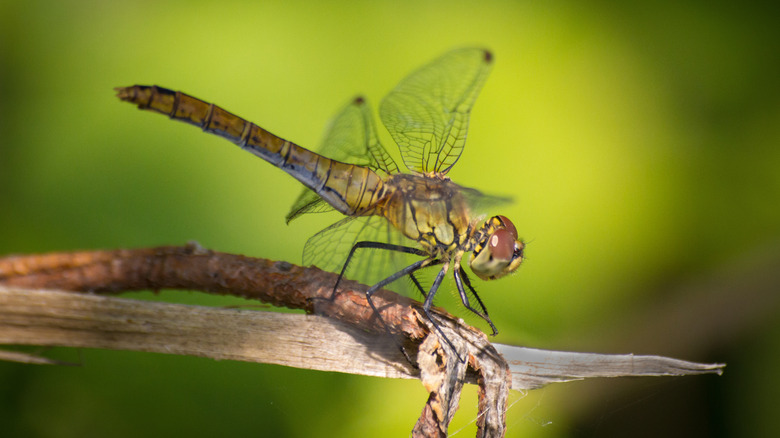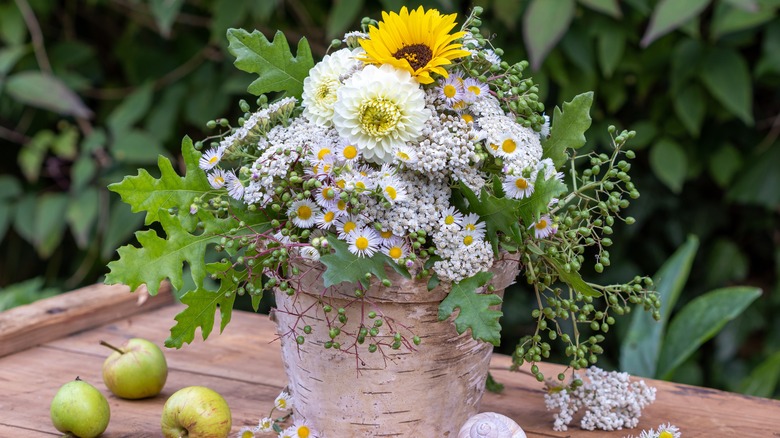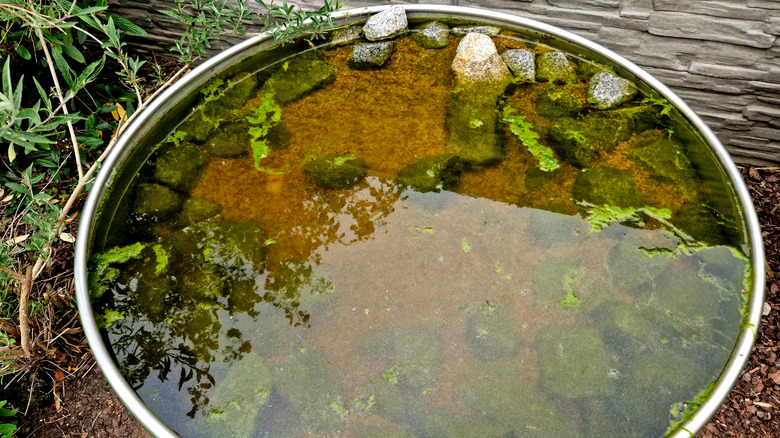Add This Wildflower To Your Container Garden To Attract Mosquito-Eating Dragonflies
If there is one singular belief that may just unite humans in virtually every corner of the world, it is surely a shared disdain for mosquitos. While these buzzing, biting pests offer nothing but annoyance (and sometimes disease) to humanity, they do serve a significant ecological purpose as a plentiful food source for many birds, fish, and larger insects, such as dragonflies. The key to controlling the mosquito population on your patio or balcony — without resorting to potentially harmful chemicals — is to attract one or more of these natural predators to the area.
Luckily, the way to attract natural mosquito predators is often as simple as strategically planting gorgeous flowers such as yarrow. Yarrow is a super-low-maintenance native North American wildflower that draws in an abundance of pollinators, including dragonflies. Consider this your guide to adding yarrow to your container garden design for the specific purpose of drawing in dragonflies to naturally combat the presence of mosquitoes.
How to grow yarrow in your container garden
Like most perennials, yarrow requires a bit of extra care when grown in pots versus in the ground. However, it is typically advised to grow yarrow in containers — even in an in-ground garden — because it can become invasive and take over spaces and resources dedicated to other nearby plants. Fortunately, the extra needs of potted yarrow aren't particularly costly or labor-intensive. First, yarrow will require a loose, general-purpose potting soil that doesn't contain fertilizer.
However, you may wish to add your own low-NPK (nitrogen, phosphorus, and potassium) fertilizer to your potting soil before planting. After planting, covering the top of the soil with organic matter, like mulch or compost, can help it to retain the few nutrients yarrow needs to thrive.
The most important aspect of caring for potted yarrow is watering. Check your yarrow's soil daily, and water it as soon as the top 2 inches feel dry. Since the plant prefers full sun exposure, this level of dryness might occur more often than you'd expect during the hottest portion of summer.
Additional features dragonflies can't resist
For those interested in doing even more to bring dragonflies to their patios or gardens, consider adding other plants favored by bees and butterflies, like milkweed and meadow sage. While dragonflies are known for their ability to control mosquito populations, they also feed on small pollinators and will be drawn to pollinator gardens. When it comes to dragonflies, in particular, garden water features are especially beneficial. These insects are aquatic and spend their early lives and metamorphoses in water.
If you'd like to invite dragonflies to make a home in your garden, provide them with both native flowering plants like yarrow and a source of water. You'll need a container about 2 feet deep with shallow sides. Add flat rocks and floating plants, like water lilies, to give dragonflies places to perch and hide. When the time comes, females will lay their eggs in or around the water, and then the nymphs (babies) will live in it until they reach adulthood.


